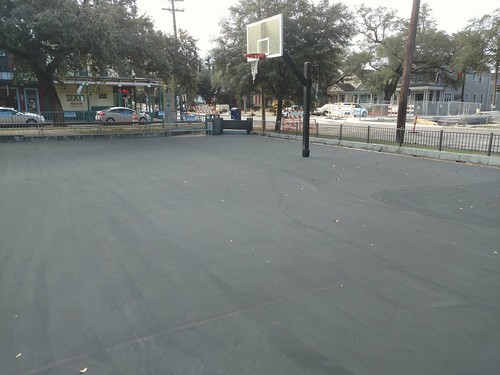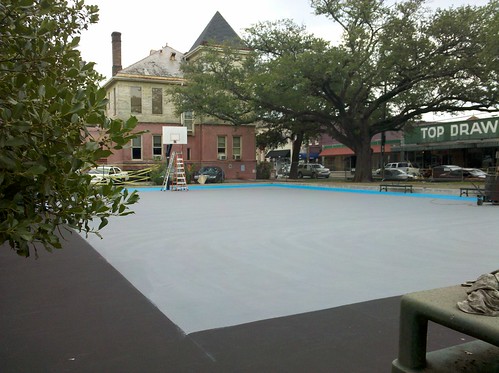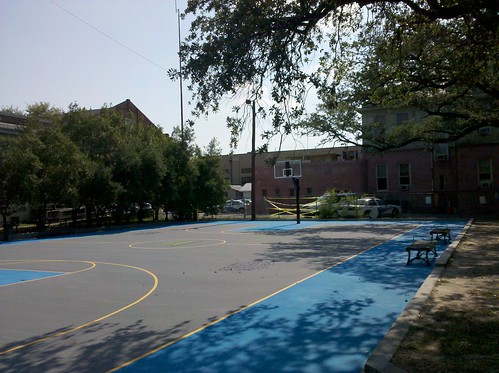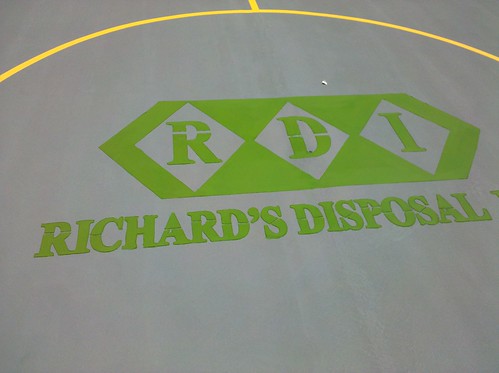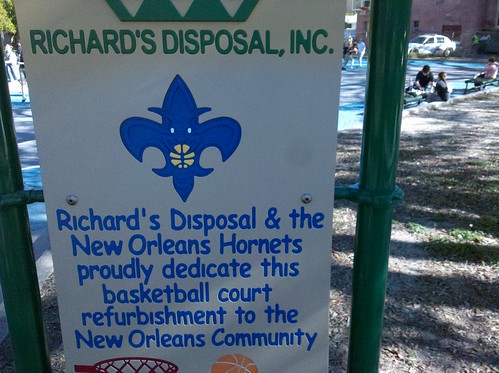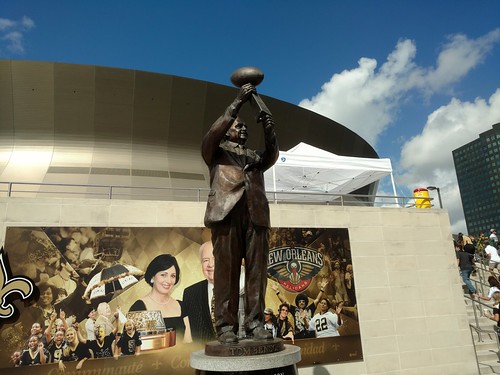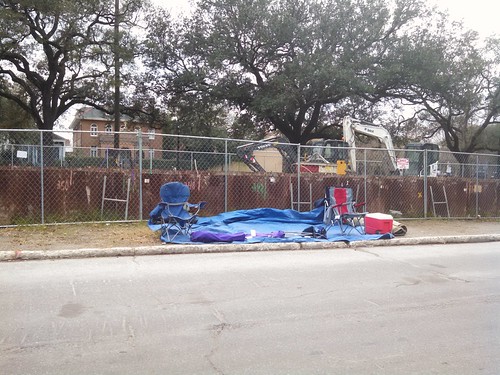New Orleans, as you may know, has a bit of an affordable housing crisis. Our political leaders thus far have responded by prioritizing the needs of developers, landlords, and, I guess, "the platforms" responsible for enabling short term rentals in neighborhoods where nobody is actually able to live anymore.
Their favorite policy tool has been
the so-called "density bonus" recently championed by Latoya Cantrell and
adopted into the CZO which allows developers to build nice things for rich people so long as they set aside a very small percentage of available units at reduced rents.
We've written a
bunch of times about how this is pretty much just
a shell game sop to luxury developers. So it's not too too surprising that our elected representatives are so enamored of it.
Once upon a time a similar policy was praised for making possible the development of the American Can Company into (mostly) luxury (but with a token amount of affordable) apartments.
Several other builders had tried to develop the American Can project but
failed to come up with the necessary financing. Mr. Kabakoff used
public-private partnerships to finance the deal. His first mortgage
consists of $29 million in tax-exempt bonds from the State of
Louisiana's private activity bond cap program. The program mandates that
20 percent of the housing units be set aside for low-income renters.
Pres has made this trick of diverting taxpayer subsidies into profits a specialty over the years. He didn't exactly invent this scam, though.
It has made Donald Trump very rich, for instance.
The way
Donald J. Trump
tells it, his first solo project as a real estate developer, the
conversion of a faded railroad hotel on 42nd Street into the sleek,
30-story Grand Hyatt, was a triumph from the very beginning.
The hotel, Mr. Trump bragged in
“Trump: The Art of the Deal,” his 1987 best seller, “was a hit from the first day. Gross operating profits now exceed $30 million a year.”
But
that book, and numerous interviews over the years, make little mention
of a crucial factor in getting the hotel built: an extraordinary 40-year
tax break that has cost
New York City
$360 million to date in forgiven, or uncollected, taxes, with four
years still to run, on a property that cost only $120 million to build
in 1980.
The
project set the pattern for Mr. Trump’s New York career: He used his
father’s, and, later, his own, extensive political connections, and
relied on a huge amount of assistance from the government and taxpayers
in the form of tax breaks, grants and incentives to benefit the 15
buildings at the core of his Manhattan real estate empire
Our local representatives love Donald Trump. Or at least they did before he got into politics. In 2007, the City Council
enthusiastically thumbsed-up a proposed Trump Tower development on Poydras Street.
The 1.6 million-square-foot tower, estimated to cost about $400
million, would fill most of the largely vacant block bounded by Poydras,
Camp, Natchez and Magazine streets. It would be 716 feet high, plus a
126-foot spire, and would contain 734 luxury condominium and hotel units
and a 715-space garage.
Florida developer Cliff Mowe said he
hopes to break ground this summer on what would be Louisiana's tallest
building. Construction is expected to take 28 months, putting completion
in late 2009.
New York real estate magnate Donald Trump
announced on Aug. 25, 2005, that he would join a team of Florida
developers in building a 70-story tower in New Orleans. Hurricane
Katrina hit four days later, but within two weeks Donald Trump Jr. said
the developers would go ahead with the project.
Although
financing has not been nailed down, Mowe has said several large lenders
are interested in the project, in part because of Trump's involvement.
No
one spoke against the proposed tower at the council meeting. The plans
were approved 5-0 on the recommendation of Councilwoman Stacy Head,
whose district includes the site. "This is Trump," Head told her
colleagues in asking for approval. "Woo-hoo."
Woo-hoo, sure. Except by this time, t
he post-Katrina market for labor and materials was already souring Trump on this project. The 2008 financial crash is said to have killed it entirely. But, if you remember, this was a period during which federal recovery funding was causing New Orleans to "buck the trend" economically speaking. Taxpayer money was pouring into the area. If only someone (looking at you, Ed Blakely) had offered Trump a sufficiently sized bucket of it, our skyline might be blessed with this jewel today.
Anyway so we never got Trump down here but we still had Pres Kabacoff and that was plenty, thank you very much. Pres hasn't risen quite as high as Trump has but he's done ok for himself in our small pond. His most recent project is
even redirecting public money to Airbnb so it's nice to see him keep on the cutting edge like that.
Meanwhile, back at the Can Company, that tax exemption just expired.
You won't believe what happens next.
NEW ORLEANS -- Michael Esnault and his partner Anne Tucker have lived in
the American Can Apartments building for the past six years, but
they’ll soon be former tenants – through no choice of their own.
They recently found a note taped to their door notifying them that they
had until the end of December to vacate their apartment.
"(It’s) definitely a slap in the face," Esnault said. "I always paid the
bills on time and everything else. What got me is the corporate greed."
Dozens of families are losing their leases at the Mid-City apartment
building as the operators phase out all of their subsidized and
low-income units. Esnault and Tucker are leasing one of the 53 units in the building set aside for low- and fixed-income families.
The American Can was built in part with government subsidies, including $29 million in tax-exempt bonds. Those bonds required the owner to keep 20 percent of the units for affordable housing for a minimum of 15 years.
That requirement expires at the end of January.
Those tenants are now losing their leases.
Where will these renters go now? Well, you know, we're working on that.
Just gotta get the right subsidy to the right millionaire first.
On Tuesday, the IDB voted to provide the project with a payment in
lieu of taxes, or PILOT. The PILOT allows the developers to pay $56,000
a year in taxes during construction, $160,000 a year once construction
is complete, annual 2.5% elevations each year thereafter, and a $75,000
bump in 2025.
The IDB estimates that the PILOT will save about $6 million over the
12 years of the deal, while developers claim that the project will
generate $29 million more in property taxes for the city over a 50-year
period.
The development site is bounded by the Lafitte Greenway, Jefferson
Davis Parkway, North Scott and Conti Streets. In addition to the one
and two bed room apartments, the mixed-use project will have ground
floor retail and restaurants and parking spaces for 570 cars. The
projected project cost is $66.5 million.
Entrepreneur Sydney Torres purchased the nine-acre site in 2015, and
Edwards Communities has it under contract to purchase the site from
Torres. Our sources tell us that Torres plans to keep the front of the
parcel closest to Bayou St. John for future development, while giving
the back portion of the parcel to Edwards Communities for this project.
Edwards Communities secured city approval for the project in November and a density bonus after agreeing to include 14 affordable units in the project.
In the meantime,
Merry Christmas to the evicted!
